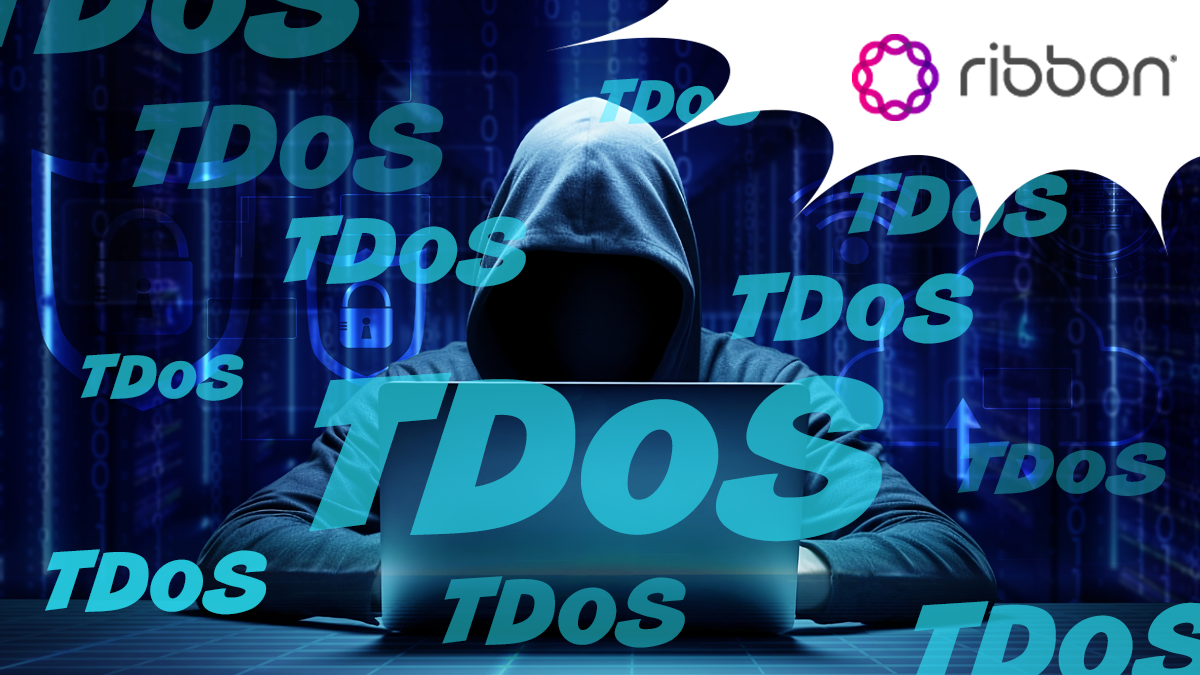A reliable telephony system for any business, large or small, is vital. Once you’ve invested in a good system, perhaps extended it to integrate software, platforms or contact centres, it can all go very wrong if you have a TDoS attack. Telephony Denial of Service (TDoS) attacks take many shapes, but all end up with the same result – the system is overwhelmed, disrupted and “kaput”.
UC Advanced caught up with Ram Ramanathan, Senior Director, Product Management at Ribbon Communications, to get some insights on this not-so-nice phenomenon. Businesses of any size simply cannot afford a TDoS attack, especially small businesses, and we asked Ram to share his knowledge and offer some advice.
Overwhelming Networks
Ram stated, “TDoS attacks overwhelm communications networks and make it difficult for legitimate calls to get through, which can lead to lost revenue or lost business opportunities. In addition, SMBs can spend a large portion of their budget to restore services and manage operations during a TDoS attack. In the US, according to the US Cybersecurity & Infrastructure Security Agency (CISA), some organisations can experience up to 12 TDoS attacks per day!”
Business Awareness
While awareness of these attacks is growing among SMBs, many still lack comprehensive measures to mitigate these threats, yet enhanced awareness and preparedness are crucial for minimising the impact of these attacks on business continuity and public safety in cases when emergency call centres such as Public Safety Answering Points (PSAPs) are targeted and have their operations disrupted.
Prevention Solutions
Ram advised, “Investing in TDoS prevention solutions, despite the initial costs, updates, maintenance, and staff training, proves to be a strategic decision with substantial long-term benefits. These benefits start with ensuring uninterrupted operational continuity, which is crucial for maintaining consistent service delivery and customer satisfaction. By preventing service disruptions, businesses can avoid significant financial losses that arise from halted operations, lost sales, and potential fines due to non-compliance with service level agreements. Moreover, these solutions offer an enhanced security framework that protects sensitive customer data from malicious attacks, thereby fostering trust and loyalty among clients. This protection is vital in an era where data breaches can severely damage a company’s reputation and lead to costly legal repercussions. Additionally, by maintaining a robust security posture, businesses can uphold a positive brand image, which is essential for attracting and retaining customers in a competitive market. Finally, the investment in TDoS prevention solutions demonstrates a proactive approach to risk management, showcasing the company’s commitment to safeguarding its assets and ensuring business resilience.”
Hybrid Vulnerability
Ram continued, “Hybrid organisations, which combine in-office and remote work, are generally more vulnerable to Telephony Denial of Service (TDoS) attacks compared to fully in-office ones. This increased vulnerability arises from the expanded attack surface that hybrid work environments present. With employees accessing corporate networks from various locations and devices, the potential entry points for attackers multiply. Remote access services, often essential in hybrid setups, can be exploited if not adequately secured.
Moreover, hybrid work models often rely heavily on cloud-based services and virtual private networks (VPNs), which can be targeted by attackers to disrupt communications. The complexity of managing security across diverse environments makes it challenging to maintain consistent security protocols, increasing the risk of TDoS attacks. In contrast, fully in-office organisations can more easily control and monitor their network infrastructure, reducing potential vulnerabilities
Future Trends
We could not let Ram go without asking him his thoughts on the future. He replied, “The future of Telephony Denial of Service (TDoS) attacks is likely to see an increase in both frequency and complexity. As organisations continue to rely heavily on telecommunication systems, attackers are expected to exploit vulnerabilities in these systems more aggressively. The proliferation of Internet of Things (IoT) devices and the expansion of 5G networks provide attackers with more entry points and greater bandwidth to launch TDoS attacks. Additionally, the increasing sophistication of attack techniques, such as multi-vector approaches that target both network and application layers simultaneously, makes mitigation more challenging.”
UC Advanced asked Ram from Ribbon Communications:
Do you have any preventative products that can detect the presence of an imminent TDoS?
Existing firewalls and security software alone are insufficient to stop malicious attacks on VoIP networks. SMBs should leverage behavioural analytics and machine learning to proactively identify security risks. When adopting a voice analytics solution like Ribbon’s, consider the following attributes:
● Pattern Recognition: Machine learning models analyse network call data to detect unknown and repeat threats by establishing predictive patterns of activity. This helps flag abnormalities and identify potentially malicious calls.
● Reputation Scoring: Uses machine learning to provide a real-time score, determining if a call is likely malicious, aiding in accurate policy decisions during call setup.
● Policy Enforcement: Mitigates attacks on VoIP services using a session border controller (SBC), which governs how calls enter and terminate within the network.
● Threat Visibility: Provides dashboards and reporting for high-level and detailed threat analysis, ensuring the solution works effectively and quantifies success in stopping attacks.
What advice does Ribbon Communications have for resellers and MSPs?
● Understand Customer Pain Points: Highlight the critical impact of TDoS attacks on SMBs, especially those running call centres. Emphasise the frequency of these attacks and the significant costs involved in restoring services
● Promote Awareness and Preparedness: Stress the importance of awareness and preparedness in mitigating TDoS threats. Many SMBs lack comprehensive measures, so educating them on the risks and necessary precautions can position you as a trusted advisor.
● Leverage Advanced Security Solutions: Recommend solutions that go beyond traditional firewalls and security software. Highlight the benefits of behavioural analytics and machine learning in proactively identifying and mitigating security risks.
● Stay Informed on Trends: Keep up with the latest trends in digital transformation, remote work, cybersecurity, and AI. Offer solutions that align with these trends to stay competitive and meet evolving customer demands
● By focusing on these strategies, resellers and MSPs can effectively address customer concerns, offer valuable solutions, and build long-term relationships with their clients.












